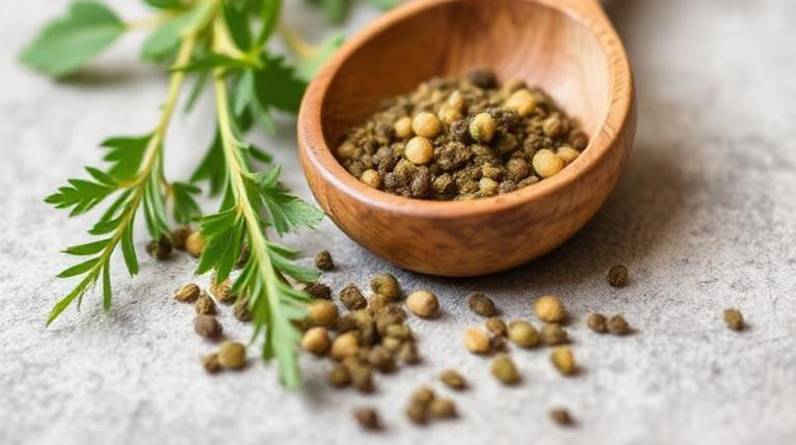Kinza Herb: A Natural Treasure for Health and Wellness
Are you someone who loves natural remedies, flavorful cooking, and simple ways to boost your health? If so, you’ve probably heard of the Kinza herb. Also known as coriander or cilantro, this vibrant green plant is far more than just a garnish on your favorite dishes. Across many cultures, the Kinza herb has been treasured for centuries as both a culinary delight and a powerful natural healer. It carries an earthy, citrusy flavor that brightens up food, and it also hides within its delicate leaves and seeds a long list of medicinal benefits.
When we explore the Kinza herb, we’re not just talking about an ingredient in the kitchen—we’re uncovering a plant that connects tradition, health, and beauty in the most remarkable way. Let’s take a deep dive into its origins, uses, and why you might want to make it a regular part of your lifestyle.
What is the Kinza Herb?
The Kinza herb is the same plant that goes by many familiar names: coriander, cilantro, and in some regions, Chinese parsley. Its scientific name is Coriandrum sativum. The interesting part about this herb is that every part of it is useful. The fresh leaves and stems are often referred to as cilantro, while the dried seeds are called coriander. Both forms come from the same plant, but they offer different flavors and unique properties.
In cooking, the Kinza herb is known for its fresh aroma, slightly tangy taste, and ability to balance rich or spicy flavors. But beyond its role in food, it has been used in traditional medicine for hundreds of years. Ancient cultures recognized its ability to cool the body, support digestion, and promote overall vitality. Even today, herbalists and nutritionists continue to celebrate it for its wide range of health benefits.
A Rich History Rooted in Tradition
The Kinza herb has an impressive history. Ancient Egyptians were known to use coriander seeds in their burial rituals, believing it had spiritual and healing powers. In traditional Indian medicine, Ayurveda, it has been used for centuries to ease digestive issues, reduce inflammation, and balance the body’s internal systems. Similarly, in Chinese medicine, Kinza has been used as a cooling herb to help clear toxins and support the body’s natural detoxification process.
This shows us something important—cultures separated by distance and time all valued the Kinza herb. That tells us its benefits are not just myths but rather deeply rooted in human experience and observation.
Nutritional Goodness in Every Leaf
What makes the Kinza herb so powerful is the impressive nutritional profile packed into those delicate leaves and tiny seeds. It’s low in calories but rich in essential nutrients. It contains vitamin C for immunity, vitamin K for healthy bones, and vitamin A for good vision and skin health. The plant also offers minerals like potassium, calcium, magnesium, and iron, all of which play critical roles in overall wellness.
Another standout component of the Kinza herb is its antioxidants. These natural compounds help fight free radicals, which are unstable molecules that can damage cells and accelerate aging. Antioxidants are key in reducing the risk of chronic diseases and keeping our skin youthful. So when you sprinkle Kinza leaves on your soup or salad, you’re adding more than flavor—you’re giving your body a little boost of natural protection.
The Kinza Herb for Digestive Health
One of the most celebrated benefits of the Kinza herb is its ability to support digestion. Both the leaves and seeds are known to stimulate enzymes and digestive juices, which help the stomach process food more efficiently. People who suffer from bloating, gas, or indigestion often find relief when they add Kinza to their diet.
The seeds, in particular, have mild carminative properties, meaning they help reduce gas formation in the intestines. Drinking coriander seed tea is a traditional remedy for easing stomach cramps and improving digestion after a heavy meal. If you’re someone who often struggles with discomfort after eating, the Kinza herb might just become your new best friend in the kitchen.
Detoxifying and Cleansing Properties
In today’s world, where we’re constantly exposed to processed foods, pollution, and stress, detoxification is more important than ever. The Kinza herb is naturally rich in compounds that help the body eliminate toxins, particularly heavy metals like lead and mercury. This makes it a natural detoxifier for the liver and bloodstream.
Some people even include Kinza juice or smoothies in their daily routine to support gentle cleansing. By helping the body flush out unwanted substances, it promotes better energy, clearer skin, and overall well-being.
Supporting Heart Health
Did you know that the Kinza herb can also play a role in protecting your heart? The plant contains compounds that may help lower cholesterol and regulate blood pressure. Studies have shown that coriander seeds, in particular, may help reduce LDL cholesterol (the “bad” cholesterol) while supporting healthy levels of HDL cholesterol (the “good” cholesterol).
The presence of antioxidants also supports cardiovascular health by reducing oxidative stress, which is linked to heart disease. Adding Kinza regularly to your meals may be a simple, natural step toward keeping your heart strong.
Beauty Benefits of the Kinza Herb
Beyond internal health, the Kinza herb also works wonders for beauty and skincare. Thanks to its high levels of vitamins and antioxidants, it can help improve the texture and appearance of your skin. Traditionally, fresh Kinza leaves have even been applied as a paste to soothe acne, rashes, and irritation.
Its antibacterial and anti-inflammatory properties make it a gentle natural remedy for breakouts. Drinking Kinza-infused water or tea may also promote clearer skin by flushing out toxins from the body. For hair, its nutrient-rich profile supports stronger follicles and reduces issues like dandruff and dryness. So, whether consumed or applied externally, the Kinza herb offers holistic beauty benefits that go hand-in-hand with its healing properties.
The Kinza Herb in Everyday Cooking
One of the easiest ways to reap the benefits of the Kinza herb is through cooking. Its versatility is unmatched. You can add fresh leaves to salads, soups, curries, and dips. Think about guacamole without that hint of fresh cilantro—it just wouldn’t be the same. The seeds, on the other hand, are commonly used as a spice in everything from bread and pickles to spice blends and marinades.
Kinza pairs beautifully with bold flavors, adding brightness and balance. Whether you’re making Mexican salsa, Indian curry, or Middle Eastern hummus, the Kinza herb often plays a starring role. And the best part? When you incorporate it into your meals, you’re effortlessly nourishing your body while enjoying delicious food.
How to Use the Kinza Herb Medicinally
If you’re curious about using the Kinza herb for health beyond the kitchen, there are many simple ways to do so. You can brew coriander seed tea to soothe digestion, blend fresh leaves into a detox juice, or even use its essential oil for massage and aromatherapy.
Some people like to soak coriander seeds in water overnight and drink the infused liquid in the morning as a natural tonic. Others grind the seeds into powder and use it in herbal remedies for colds and inflammation. The beauty of the Kinza herb is that it adapts easily to both culinary and medicinal use.
Why the Kinza Herb Deserves a Place in Your Life
At this point, it’s clear that the Kinza herb is not just an ordinary green garnish. It is a plant that offers a wide range of health, beauty, and culinary benefits. From supporting digestion and detoxifying the body to improving skin and hair, it truly lives up to its reputation as a natural treasure.
Incorporating Kinza into your lifestyle doesn’t require a complicated plan. A handful of fresh leaves in your salad, a sprinkle of coriander powder in your curry, or a soothing tea made from its seeds can all add up to big results over time.
Final Thoughts
The Kinza herb is a gift from nature that reminds us of the connection between food and medicine. It’s proof that sometimes the simplest plants can carry the most powerful benefits. Whether you’re looking to enhance your meals, improve your health, or add a natural boost to your beauty routine, the Kinza herb has something to offer.
So the next time you see those bright green leaves at the market, remember you’re holding more than just an herb—you’re holding centuries of tradition, healing, and flavor in your hands. Embrace the Kinza herb as part of your daily life, and you’ll be amazed at how this small plant can make such a big difference in your well-being.





